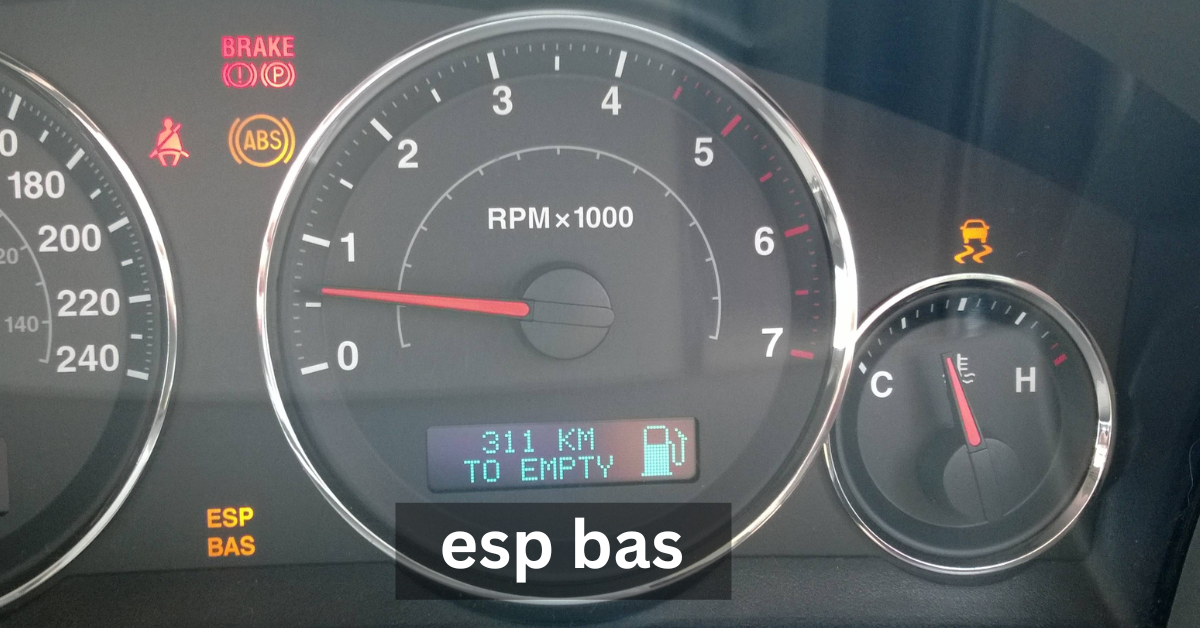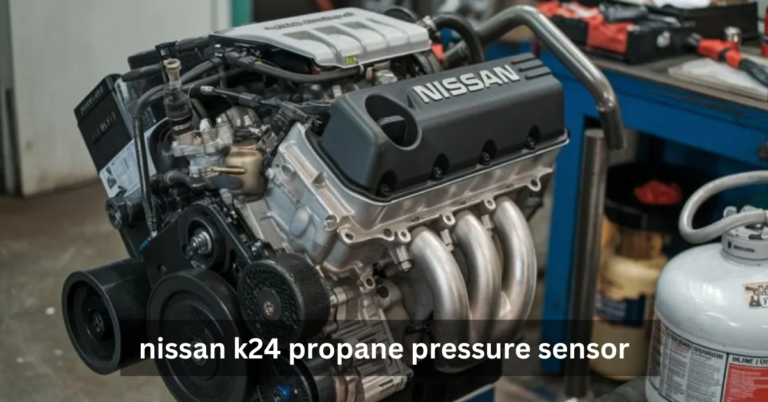ESP BAS: Common Causes Explained
The ESP BAS light is a dashboard warning light that indicates a problem with the Electronic Stability Program (ESP) and Brake Assist System (BAS) in your vehicle. It can illuminate for various reasons, such as sensor malfunctions, brake system issues, or electrical faults. When the light turns on, it’s essential to have your vehicle inspected to prevent safety risks.
One of the most mysterious lights that could appear is the ESP BAS light. If you’ve seen this light pop up, you’re not alone, and it’s crucial to know what it means and how to address it. This guide will break down everything you need to know about the ESP BAS system, its significance in vehicle safety, and the steps to take if the warning light comes on.
What is ESP BAS?
Before diving into troubleshooting, it’s essential to understand the two systems involved in the ESP BAS light—the Electronic Stability Program (ESP) and Brake Assist System (BAS).
Electronic Stability Program (ESP) is a critical system designed to help drivers maintain control of the vehicle, particularly during sudden turns or when traction is lost. It detects when the vehicle begins to skid or loses grip and applies brakes to individual wheels to help prevent a loss of control. Manufacturers like Mercedes-Benz, BMW, Toyota, and General Motors have their own versions of ESP systems that are integrated into their vehicles’ safety architecture.
Brake Assist System (BAS) is designed to aid in emergency braking assistance, reducing stopping distance during sudden braking situations. BAS works alongside the vehicle’s ABS (Anti-lock Braking System) to enhance stopping power, especially when the driver doesn’t apply enough pressure on the brake pedal in emergency scenarios.
Together, ESP and BAS form a vehicle stability control system, making the vehicle safer and easier to control under challenging driving conditions.
Why is the ESP BAS System Important for Vehicle Safety?
The ESP BAS system works tirelessly in the background to keep you safe. These systems are essential for driving stability, particularly in adverse conditions like wet, icy, or snowy roads, where traction loss is more common. When these systems are active, they ensure that:
- Traction Loss Detection: ESP detects if any of the wheels lose traction, which can lead to a skid.
- Emergency Braking Assistance: BAS applies extra brake force in emergency stops, significantly reducing stopping distance.
- Skid Prevention: By intervening when skidding is detected, the ESP system prevents dangerous driving situations.
Having these technologies in your vehicle contributes significantly to crash prevention and the overall effectiveness of your electronic safety systems. But what happens when these systems start malfunctioning, and the ESP BAS light illuminates on your dashboard?
Understanding the ESP and BAS Systems
Let’s dive deeper into how both systems function and how they work together.
What is the Electronic Stability Program (ESP)?
The ESP system is an advanced vehicle control system that helps the driver maintain control during sudden steering maneuvers or adverse road conditions. It works with other systems like ABS and traction control to reduce the likelihood of the vehicle losing traction.
How ESP Works to Improve Vehicle Stability
The ESP system continuously monitors the car’s wheel speed sensors, steering angle sensor, and other components to detect any instability. For example, if you are taking a corner too fast and the vehicle starts to skid, ESP automatically brakes individual wheels to correct the vehicle’s trajectory, ensuring that it stays on course.
Key Components of the ESP System
The key components of the ESP system include:
- Steering Angle Sensor: Helps detect if the wheels are aligned with the driver’s input.
- Wheel Speed Sensors: Monitors the speed of each wheel to detect traction loss.
- Stability Control Module: The brain of the system that processes data and activates brakes if necessary.
What is the Brake Assist System (BAS)?
The Brake Assist System (BAS) is designed to enhance the braking power of your vehicle when you apply the brakes suddenly in an emergency. It recognizes the urgency of braking and automatically applies the necessary force to stop the vehicle faster, preventing any accidents.
The Role of BAS in Emergency Braking
BAS helps the vehicle stop quickly in an emergency by detecting rapid brake application. It assists when you don’t apply enough force to stop the vehicle immediately, ensuring that the car responds quickly and safely.
How BAS Enhances Stopping Distance and Safety
With BAS, the car’s braking efficiency is improved during critical moments, providing automatic braking assistance and emergency braking assistance that helps in reducing stopping distances and avoiding collisions.
How ESP BAS Systems Work Together
The ESP BAS systems work together to ensure both stability and effective braking. When ESP detects a loss of control, it activates the brakes to prevent the vehicle from skidding or swerving. Meanwhile, BAS ensures that in an emergency, you have enough braking force to bring the vehicle to a stop quickly.
Both systems also integrate with the ABS (Anti-lock Braking System), which keeps the wheels from locking up during hard braking. By coordinating the efforts of these systems, your vehicle’s stability control system improves, keeping you safer on the road.
Common Causes of ESP BAS Warning Light Activation
When the ESP BAS light turns on, it signals an issue with one or both systems. There are several potential causes for this:
Defective Steering Angle Sensor
The steering angle sensor is an integral part of the ESP system, helping the system determine if the wheels are aligned with the steering input. If this sensor malfunctions, it can cause the ESP BAS light to come on, as the system can no longer determine if the vehicle’s direction matches the steering input.
Faulty Wheel Speed Sensor
Each wheel of your vehicle has a wheel speed sensor that tracks how fast the wheels are rotating. When one of these sensors fails, the ESP BAS system can no longer accurately detect traction loss and may trigger the ESP warning light.
Brake Switch Malfunction
The brake light switch ensures the vehicle’s brake lights turn on when the pedal is pressed. If this switch fails, it can affect the BAS system, leading to a malfunction and causing the BAS warning light to illuminate.
Wiring and Electrical Issues
Damaged or faulty wiring in the ESP BAS system can interrupt the signal from the wheel speed sensors, brake switch, or other components, triggering the warning light. Ensuring your vehicle’s wiring is in good condition is vital to avoid these issues.
Defective Brake Components
Worn or damaged brake pads, calipers, or rotors can also activate the ESP BAS light. A malfunctioning brake system directly impacts the ESP and BAS systems because they rely on proper braking force to function correctly.
How to Diagnose and Troubleshoot ESP BAS Issues
When the ESP BAS light comes on, diagnosing the issue promptly is essential to avoid further complications.
Using a Fault Code Scanner
A fault code scanner is an excellent tool for diagnosing issues within your vehicle’s electronic braking system. By plugging into your vehicle’s OBD-II port, a scanner can read the fault codes that help pinpoint the exact problem causing the ESP BAS light to illuminate.
Professional Inspection: When to Seek Help
If you’re not comfortable diagnosing the issue yourself, seeking a professional inspection is the best course of action. A certified mechanic can identify whether the problem is with the steering angle sensor, wheel speed sensors, or another component and provide expert recommendations for repair.
What to Do When the ESP BAS Light Comes On
If you see the ESP BAS light on your dashboard, it’s essential to take the right steps to ensure your safety.
Immediate Steps to Take When the Light Illuminates
If the light appears while driving, it’s best to avoid sudden or sharp turns, as the stability control may not be functioning correctly. Continue driving carefully until you can safely pull over.
Safety Measures While Driving with the ESP BAS Warning
If the light comes on, avoid aggressive driving maneuvers. The stability control failure could lead to a loss of traction, so take extra precautions, especially in adverse weather conditions.
Resetting the Esp Bas Light Light
Once you’ve resolved the underlying issue (whether it’s a sensor failure or brake malfunction), you can try resetting the ESP BAS light by disconnecting the vehicle’s battery for a few minutes. However, it’s recommended to let a mechanic reset the system after repairs.
Repairing the ESP BAS System: Costs and Considerations
Repairing your ESP BAS system may vary in cost depending on the issue. A sensor replacement might cost around $100-$200, but more complex repairs (like replacing the brake switch or wiring issues) can exceed $500.
Conclusion
Understanding the ESP BAS system and its role in vehicle stability control can make all the difference when that warning light appears. Regular maintenance and timely repairs will keep your vehicle’s electronic safety systems working seamlessly. Always take the ESP BAS light seriously and address the issue as soon as possible to ensure your vehicle remains safe and reliable on the road.
Frequently Asked Questions
Can I Drive with the ESP BAS Light On?
While it is possible to drive with the ESP BAS light on, it’s not recommended. The ESP and BAS systems are crucial for maintaining vehicle control, especially in emergency situations. Driving without these systems fully operational may increase the risk of accidents, particularly in challenging road conditions. It’s best to address the issue promptly.
How Do I Reset the ESP BAS Light?
If the issue triggering the ESP BAS light has been fixed, you can try resetting it by disconnecting the vehicle’s battery for a few minutes. However, it’s important to note that simply resetting the light does not fix the underlying problem. For a permanent solution, the faulty components (such as sensors or wiring) must be repaired or replaced.
What Causes the ESP BAS Light to Come On Intermittently?
The ESP BAS light may come on intermittently due to a loose connection or a faulty sensor, such as the steering angle sensor or wheel speed sensors. It could also be triggered by a malfunction in the brake system, especially if the brake switch is not functioning correctly. Intermittent issues should be inspected and repaired as soon as possible to avoid further damage.
How Much Does it Cost to Repair ESP BAS Systems?
Repair costs for ESP BAS systems can vary depending on the specific issue. Replacing a sensor may cost between $100 and $300, while more extensive repairs, like fixing wiring or replacing brake components, can range from $400 to $800 or more. Costs also depend on the make and model of your vehicle, with some luxury brands, like Mercedes-Benz or BMW, being more expensive to repair.
Stay in touch to get more updates & alerts on EroMe! Thank you




